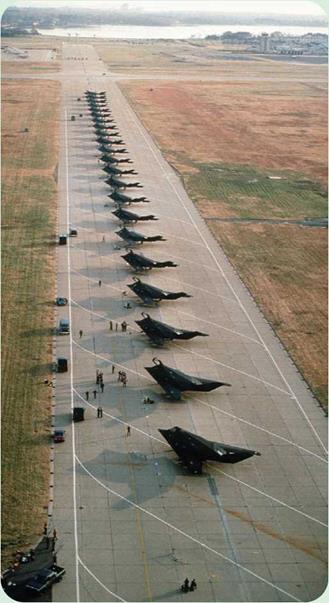Stealth
|
S |
tealth is the ability to move in secret. A stealth airplane is designed to fly unseen, evading detection by enemy radar. Stealth technology uses a combination of design factors, including materials, engines, and shape. A stealth strike aircraft can attack its target without warning. It also can fly reconnaissance missions without being detected.
Early Research
The research for stealth airplanes began in the 1950s. Air defense radar was developed during World War II (1939-1945). By the 1950s, air defenses had progressed so rapidly that almost any airplane flying over hostile territory was likely to be detected by radar. It then could be tracked and shot down with missiles. This was the era of the Cold War, when the United States and the Soviet Union were engaged in an arms race, during which both countries built up weapons supplies and advanced their military technology. Both sides used espionage, including spyplanes, to discover the other’s secrets.
At first, American strategists hoped that a high-flying airplane such as the U-2, developed by the Lockheed Corporation’s Skunk Works design team, could evade detection. This theory was disproved in 1960 when a U-2 spy plane was shot down over the Soviet Union. Later, expensive projects-such as the XB-70 Valkyrie bomber-were canceled
|
О After testing was completed, fifty-seven F-117s were made for the U. S. Air Force. Military planners were delighted with the plane’s ability to travel undetected and attack targets with pinpoint accuracy. |
when it was realized that such airplanes left a large “blip” on radar screens, making them easy targets for missiles. By the 1970s, surface-to-air (SAM) missiles had
become so effective that few airplanes could escape being targeted once spotted on enemy radar.
Scientists did not give up, however. All airplanes, especially metal planes with heat-emitting jet engines, leave a track, called a signature, on a radar screen. The answer to escaping detection appeared to lie in finding a way to “cloak” the plane, thereby making it invisible to radar. Engineers looked for ways of reducing an aircraft’s radar signature so that it would leave a smaller blip or not show up at all.
Mathematicians came up with a computer program, called Echo, that was able to predict the radar signature left by different airplane shapes. Studies showed that a body shape made of flat panels, or facets, could take almost all the radar energy that was hitting it and radiate that energy away from the ground, making the airplane virtually invisible to defense radars. The trick was to design an airplane of this shape, somewhat like a flying diamond, that could fly fast enough and high enough to be effective.











